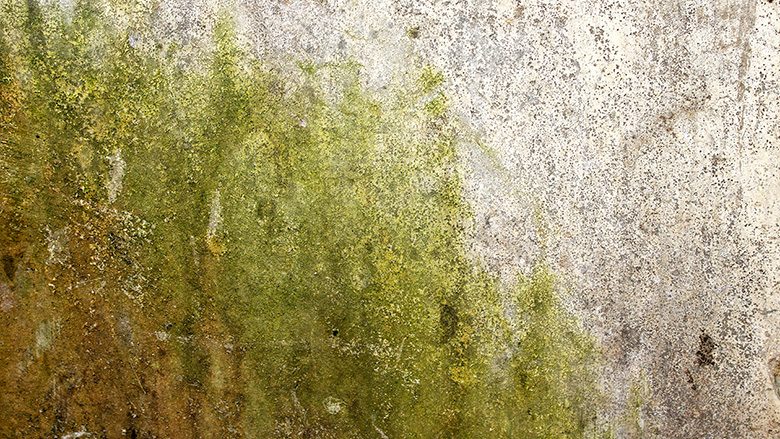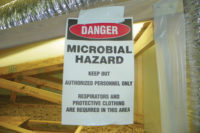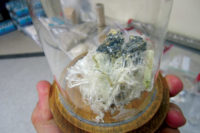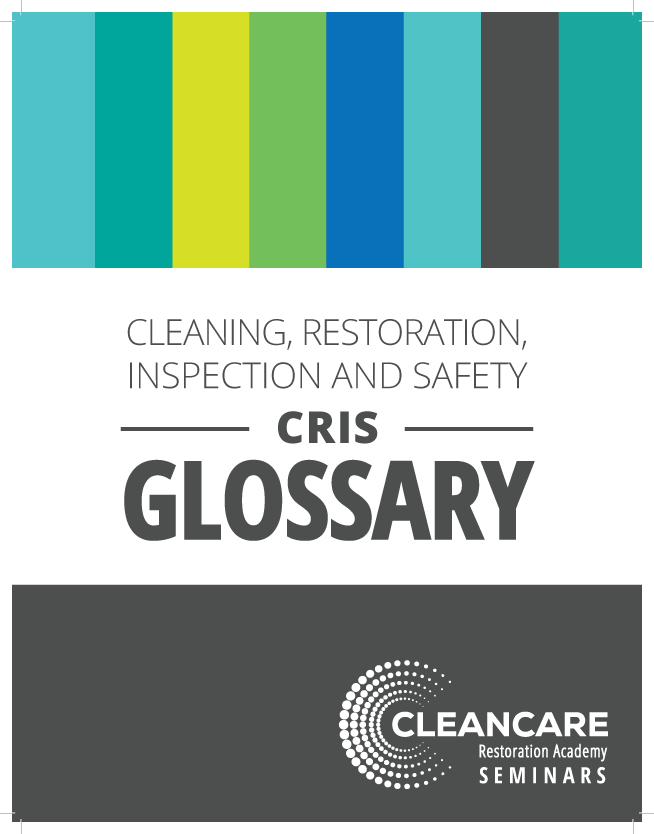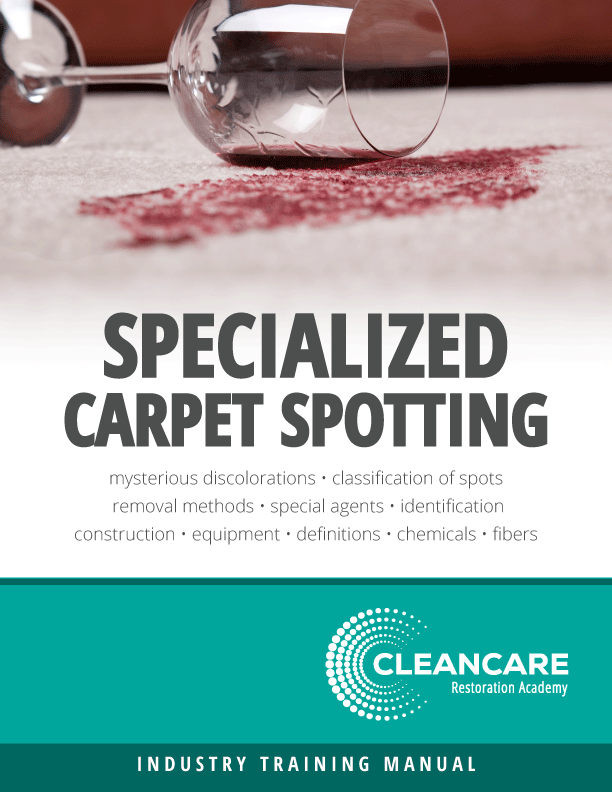Erring on the Side of Caution
A look at common environmental issues every contractor should understand










Cooties. According to playground lore, little girls and boys carry heaps of them. Apparently, like many environmental issues of concern, cooties cannot be seen with the naked eye, nor do they have any detectable odor. I cannot tell you the OSHA permissible exposure limit (PEL) for cooties, although many environmental issues do have mandated limitations on exposure. Cooties are transferred via skin-to-skin contact in a playground setting, but many environmental contaminants can find additional routes to reach you such as inhalation, ingestion or absorption. A disastrous dose of cooties can come in the acute form of a kiss behind the swing set and/or from chronic tagging over time. Ultimately, cootie exposure can lead to a complete loss of the spinal column, a tuxedo rental and the incurable “yes-dear-osis.” I myself am infected. And, with no known remedy, I remain happily married.
In the course of your restoration and remediation work there are far more nefarious environmental hazards to consider then playground cooties. Awareness is the first step in mitigating both fictitious cooties and very real environmental hazards. Below, I briefly describe a few of the common environmental issues crews encounter. It is not an exhaustive list. It is not in order of importance. It is no substitute for formal education and field experience. This information is merely designed to raise awareness and to spark a dialogue within your team.
Carbon Monoxide (CO)
Let’s start with an easy one. According to the American Medical Association, carbon monoxide (CO) is the No. 1 cause of poisoning deaths in the United States, resulting in around 10,000 injuries and 2,100 deaths every year. CO interferes with the oxygen-carrying capacity of blood. This odorless and tasteless gas is non-irritating and can overcome people without warning. Symptoms caused by exposure to CO include fatigue, visual impairment, headache, nausea and death (if you consider death merely a symptom). Tragically, just this month a Williamsport, Pennsylvania couple made love in their parked car in a garage. They left the vehicle running and were operating a kerosene heater, presumably for warmth from the recent bitter cold. Both succumbed to carbon monoxide poisoning. As ridiculous as this scenario sounds, CO exposure on projects is sometimes just as ridiculous. We go into restricted spaces and create CO regularly.
Use of job site generators, gas-powered cutting tools, propane-powered floor burnishers, propane-powered fork lifts, gas-powered Bobcats, fuel-fired heaters and other combustion engines are very common to restoration projects. When used indoors, in low-lying areas or in semi-enclosed spaces, these tools of the trade can become instruments of death (or at best, instruments of headache). Please choose alternate products when possible, ventilate well and monitor the breathing zones of your team. Today’s carbon monoxide detectors and exposure meters are smaller, cheaper and more durable than ever. Get them. Use them. Save a life.
Carbon Dioxide (CO2)
Although not as hazardous as carbon monoxide at low concentrations, carbon dioxide (CO2) can lead to asphyxiation. Dry ice, which is frozen carbon dioxide, is a popular media for use in a media blasting applications. The sublimation of dry ice solid into gaseous CO2 can lead to extremely elevated localized CO2 concentrations in conjunction with the displacement of air, which contains the 19.5% to 20.8% oxygen we prefer for living. Even if you do not suffocate to death from CO2, you can become lightheaded, lose your balance, fall down or fall off a ladder and crack your coconut. And, nobody wants to see your coconut juice all over the jobsite. It just means more cleanup.
A relatively new and potentially dangerous CO2 use you should put on your radar is the use of large cryogenic CO2 tanks for carbonating and delivering restaurant soda and beer. If one of these CO2 lines is cut by your team, if a fitting fails or if the tank ruptures, CO2 can flood the room causing occupants to pass out and eventually die. Recent incidents (a near miss in Phoenix, AZ and a death in Pooler, GA) have brought this hazard some attention, but many are still unaware.
Explosions
Explosions? What? Yes, I said explosions. Fire needs oxygen (always present), a fuel source and a spark. Fuel sources can be surprisingly simple. Are you cleaning paper dust from a mail sorting room or paper recycling center? Perhaps you are removing floor mastic with a solvent. Ever use spray glue for containment set up? Aside from some of the exposures to the chemicals themselves, all these activities can disperse flammable fuel into the air at a mix ratio perfect for an explosive disaster. The spark can come from anywhere, such as from power tools that are not intrinsically safe or the activation of a pilot light on a nearby gas water heater.
According to OSHA, the U.S. Chemical Safety and Hazard Investigation Board (CSB) identified 281 combustible dust incidents between 1980 and 2005 that led to the deaths of 119 workers, injured 718 and extensively damaged numerous industrial facilities.
Remember, just because things don’t burn violently as solids (metal, food, paper), they may burn rapidly with tremendous explosive force when aerosolized. Choose products that are less flammable, use intrinsically safe tools, and ventilate, ventilate, ventilate and capture fine dust at the source.
Asbestos
Federally regulated, common in pre-1980 buildings and still found in new construction, asbestos is an often overlooked killer of bank accounts, reputations and people. If you are not considering the potential for asbestos fibers in the building materials you disturb on all your projects, you are deficient in your practice.
Lead-Based Paint
Lead-based paint (LBP) was banned for use in residential structures in1978, but is still around in our older home stock. And, awareness of LBP is higher than ever. The recent EPA Lead Renovation, Repair & Painting (RRP) rules and the revisions to HUD Title X mean consumers and plaintiff attorneys know the ropes and are ready to hang you with them. Certainly you don’t want to cause lead exposure in the children of your clients. In addition, overexposure to lead can make your team members moody, stupid and constipated. I don’t want to work with folks like that, do you?
Infectious Agents
If we cannot keep the bacteria and viruses that cause our typical cold and flu ailments out of us, what makes us think working Category 3 sewage losses, trauma scenes with blood borne pathogens or other “bug-rich” environments won’t result in exposure and infections? Bad bugs like Clostridium difficile (C. dif.), Methicillin-resistant Staphylococcus aureus (MRSA), Vancomycin-resistant Enterococci (VRE), hepatitis, Legionella pneumophila, Escherichia coli (E. Coli 0157:H7) are all common critters that you encounter.
Avoid getting harmful germs inside your body. Wear your personal protective equipment (PPE) including: gloves, eyewear, respirator, protective coveralls, etc. Wash and disinfect your tool containers and your tools that are used on bug-rich projects. Use your prescribed disinfecting agents on work areas. Ventilate your work areas. Practice good personal hygiene. Send sick workers home. Keep your hands out of your nose, eyes, mouth and cuts. Wash your hands often and well.
Reduce the impact of bugs that do get inside your body by maintaining a healthy lifestyle (stop smoking, exercise, eat right, sleep well), get immunized (Hepatitis A and/or B Vaccine, Tetanus, etc.) and practice aseptic wound care.
All Mixed Up
We need chemicals on restoration projects. As a rule of thumb we want to use the least amount of chemical possible to still achieve the desired effect. The tendency is for folks to think that if a 1/10 bleach to water solution is good then a 10/10 or 100% solution must be much better. Any full strength or stronger solution than prescribed by the manufacturer may not be more effective, but it could be more dangerous to the applier and to bystanders.
Trying to save money by mixing a light solution may reduce the efficacy dramatically, so that you might as well not use anything. Saving money by hurrying the dwell time (the time a surface should remain wetted by the agent in use) reduces the efficacy of a product as well.
Incompatibility issues are far too common. Here is a classic that is as true today as it was in my youth (a long time ago). Sodium hypochlorite (bleach) is a good disinfectant. Ammonia is a good disinfectant. Mixing them in an attempt to make a great disinfectant is very common. Unfortunately, this combination creates a toxic gas that evacuates the building at best and injures people at worst. Hell, even my own Italian cleaning goddess mother nearly killed herself from pulmonary edema with this one. Perhaps that is why I am so averse to housework to this day.
Unlabeled containers are a no-no too. If you don’t know what it is, then all the above issues are possible. Plus, if someone splashes it in their eye or drinks it, you won’t know which MSDS to refer to or what to tell poison control.
In conclusion, environmental issues are real. They are common. They require your attention. Use good judgement. After all, you are in this business to help people. It would be counter to your mission to injure your team or your clients.
Looking for a reprint of this article?
From high-res PDFs to custom plaques, order your copy today!


